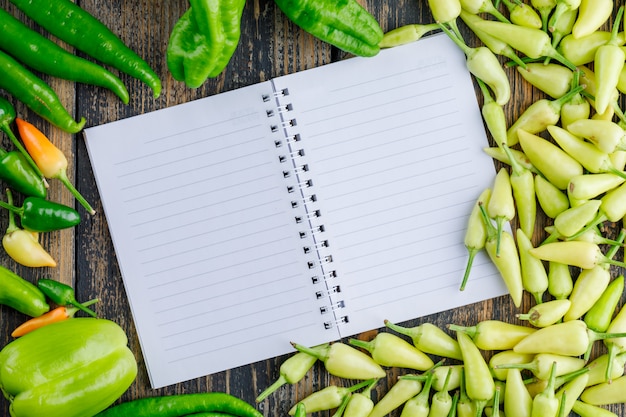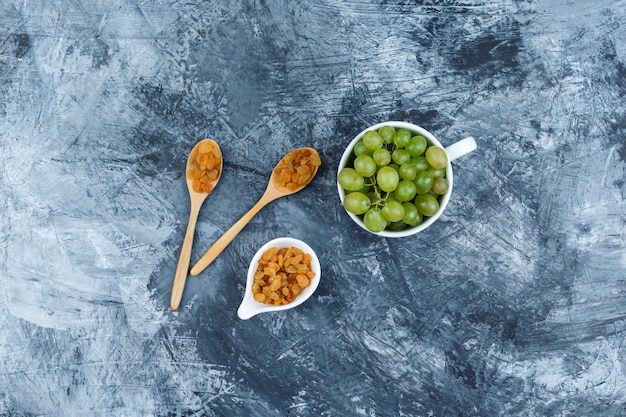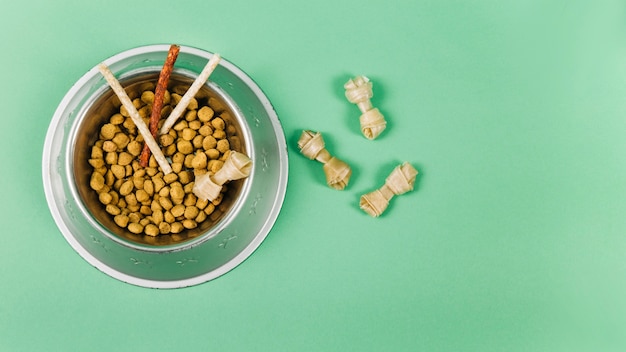Let's talk about edamame. These little green pods, packed with protein and flavor, are a versatile addition to any kitchen. From a healthy snack to a delicious side dish or even a star ingredient in a salad, they're a real crowd-pleaser. But here's the thing, cooking edamame can be a bit tricky if you're not careful. You don't want them to be overcooked and mushy, or undercooked and tough. That's why I'm here, to share my knowledge and a few cheeky tips to help you cook perfect edamame every single time.
(Part 1) What are Edamame?

Let's start with the basics, shall we? Edamame are essentially immature soybeans. They're harvested while still in their pods, which means they're super tender and packed with goodness. You'll find them fresh, frozen, or even dried, but we'll focus on the first two for now.
fresh edamame
Fresh edamame, the kind you get at the farmers market or your local supermarket, is a real treat. They're a little more expensive, but the flavor is simply divine. The pods are plump and juicy, and the beans inside have a beautiful, vibrant green color. The best part? Fresh edamame has a slightly sweet and earthy flavor that's hard to beat. It's almost like a delicate nutty note with a hint of grassy freshness.
One thing to remember about fresh edamame is that they tend to have a shorter shelf life than their frozen counterparts. So, if you're buying them fresh, make sure to use them within a couple of days. Otherwise, they'll start to lose their vibrancy and freshness.
frozen edamame
Frozen edamame is a godsend, especially for busy folks like me. It's readily available, affordable, and frankly, just as delicious as fresh edamame. You can find them in the freezer section of most supermarkets, and they usually come in a bag or a package. The good news is that frozen edamame is already shelled, saving you some time and effort. However, they might be a bit harder and tougher than fresh edamame, which is why you need to cook them right.
Don't worry, though. With a little care, you can still achieve that perfect, tender texture with frozen edamame. Just follow my tips and tricks, and you'll be enjoying delicious edamame in no time.
(Part 2) Choosing the Right Edamame

Now that we've tackled the basics, let's talk about how to choose the best edamame for your needs. It's all about picking those plump, vibrant pods, avoiding any signs of damage or discoloration.
Choosing Fresh Edamame
When shopping for fresh edamame, I always look for pods that are bright green and plump. They should feel firm to the touch and have a nice sheen. Avoid any pods that are wrinkled, discolored, or have brown spots. These are signs that the edamame have been sitting around for too long and might not be as fresh as you'd like.
Here's a little trick: gently press on the pods. If they feel soft and squishy, they're probably past their prime. You want them to be firm and springy, like a bouncy castle. If you hear a slight snap when you press on them, that's a good sign. It means they're still fresh and juicy.
Choosing Frozen Edamame
Choosing frozen edamame is a bit less demanding, but there are still things to keep in mind. Check the bag for any ice crystals. Ice crystals usually mean the edamame have been frozen and thawed multiple times, which can affect their texture and flavor. The beans might become a bit mushy, which isn't ideal.
And here's a secret: look for edamame with the date code on the packaging. Ideally, you want the freshest batch, so opt for the latest date code possible. This ensures that your edamame has been frozen for the shortest amount of time, resulting in the best possible flavor and texture.
(Part 3) Preparing Edamame

Now that you've got your perfect edamame, it's time to prepare them for cooking. Remember, preparation is key to a delightful edamame experience. So, let's get our hands dirty.
Preparing Fresh Edamame
Fresh edamame needs a little TLC before they're ready to hit the pan. You'll need to remove them from the pods. This might seem like a chore, but it's not that bad. The easiest way is to simply snap off the stems. Once you've removed the stems, you can either keep the pods whole or shell them for individual beans.
If you're keeping the pods whole, give them a good rinse under cold water and pat them dry with a kitchen towel. If you're shelling, just pop the beans out of the pods. They should come out easily with a gentle squeeze. Once you've shelled them, rinse them thoroughly and pat them dry again.
If you're using fresh edamame pods, consider leaving them whole for a more rustic presentation. This is especially great for a side dish or appetizer. But if you're adding them to a salad or stir-fry, shelling them is the way to go.
Preparing Frozen Edamame
Frozen edamame are a real time-saver because they're already shelled. All you need to do is give them a rinse under cold water and pat them dry with a kitchen towel. And you're good to go! I always try to give them a quick rinse even if they're already packaged, just to remove any excess ice crystals and ensure they're nice and clean.
(Part 4) Cooking Edamame
Ah, the moment of truth. It's time to cook our edamame and unleash their delightful flavors. Now, you can cook edamame in a few different ways: steaming, boiling, or roasting. But I find steaming to be the best way to retain their beautiful green color and their delicate flavor.
Steaming Edamame
Steaming is my go-to method for cooking edamame. It's gentle, it preserves their flavor, and it's super easy. All you need is a steamer basket and a pot of boiling water.
1. Fill the pot with water and bring it to a boil.2. Place the steamer basket on top of the pot, making sure the basket is not touching the water.3. Add your edamame to the steamer basket and cover the pot with a lid. 4. Steam the edamame for 5-7 minutes, or until they're tender but still slightly firm. If you're using frozen edamame, they might need a little longer, perhaps 7-9 minutes. But keep a close eye on them, as overcooked edamame can become mushy.
You'll know they're done when they turn a vibrant, bright green color. And when you press on them, they should feel firm but not hard. They should have a slight "give" to them, like a perfectly ripe avocado.
Boiling Edamame
Boiling is a good option if you're in a hurry or if you don't have a steamer basket. Just make sure to keep an eye on the cooking time to avoid overcooking them.
1. Fill a pot with water and bring it to a boil.2. Add the edamame to the boiling water and cook for 3-5 minutes, or until they're tender. If you're using frozen edamame, you might need to cook them for a little longer, perhaps 4-6 minutes.
Keep a close eye on them, as overcooked edamame can become mushy. When they're done, they should be bright green and have a slight "give" when you press on them.
Roasting Edamame
Roasting edamame adds a lovely toasty flavor and a slightly crispy texture. It's a great option if you want to add some depth to your edamame. And it's perfect for those who prefer a bit of crunch to their edamame.
1. Preheat your oven to 400 degrees Fahrenheit (200 degrees Celsius).2. Toss the edamame with a little olive oil, salt, and pepper.3. Spread them out on a baking sheet and roast them for 15-20 minutes, or until they're tender and slightly browned. The edges should be slightly crispy, and the beans should have a nice golden hue.
If you're feeling adventurous, you can also add other spices to your roasting edamame, like garlic powder, onion powder, or chili powder. Just be sure to add them in small amounts, as you don't want to overpower the delicate flavor of the edamame.
(Part 5) Serving Edamame
Now that your edamame are cooked to perfection, it's time to serve them up and enjoy. You can serve them on their own, or you can get creative and add some extra flavor.
Serving Edamame Simple
The simplest way to enjoy edamame is to serve them hot, sprinkled with a little salt. You can also add a squeeze of lemon juice for a bit of tang. The salt and lemon combination really brings out the natural sweetness of the edamame.
Serving Edamame with Flavor
If you're looking for a more complex flavor profile, try drizzling them with some soy sauce, chili oil, or sriracha sauce. You can also add some chopped herbs like cilantro or mint, or some toasted sesame seeds for a nutty flavor. For a real kick, try adding some crushed red pepper flakes to your edamame.
A little tip: If you're using chili oil or sriracha sauce, start with a small amount and add more to taste. You don't want to overpower the delicate flavor of the edamame.
Serving Edamame as a Snack
Edamame make a perfect, healthy snack, especially if you're craving something crunchy and satisfying. I love to serve them in a bowl with a small ramekin of your favorite dipping sauce on the side. Some popular dipping sauces include:
- Soy sauce with a dash of sesame oil: This classic combination is both salty and savory. It's perfect for bringing out the natural sweetness of the edamame.
- Sweet chili sauce: This sauce adds a touch of sweetness and heat to your edamame. It's a good choice for those who like a little bit of kick.
- Sriracha sauce: This spicy sauce is a great way to add some heat to your edamame. It's a perfect choice for those who like their food with a bit of a kick. Just be careful not to use too much!
- Mayonnaise with a dash of hot sauce: This creamy and spicy sauce is a delicious and unexpected way to enjoy edamame. It's a great option for those who like a little bit of both creaminess and heat.
If you're feeling creative, you can also make your own dipping sauce for edamame. Just combine your favorite ingredients and experiment until you find the perfect combination for you.
(Part 6) Edamame in Dishes
Beyond being a tasty snack, edamame can also star in a variety of dishes. Here are a few of my favorite ways to use edamame:
Edamame Salad
A vibrant edamame salad is a perfect summer dish. Just combine cooked edamame with chopped vegetables like bell peppers, cucumbers, and onions, and toss them with a light vinaigrette. Add some crumbled feta cheese or toasted almonds for extra flavor.
For a more filling salad, you can also add some grilled chicken, tofu, or chickpeas. And if you're feeling really adventurous, try adding some chopped mango or pineapple for a sweet and tangy twist.
Edamame Pasta Salad
A hearty edamame pasta salad is a satisfying meal or side dish. Cook your favorite pasta, then combine it with cooked edamame, chopped vegetables, and a creamy dressing. For a more flavorful dish, try adding some crumbled bacon, shredded chicken, or diced avocado.
You can also use a variety of different pastas for your edamame pasta salad, such as rotini, penne, or even orzo. And for a more flavorful dressing, try using a pesto-based dressing or a vinaigrette with a little bit of lemon juice.
Edamame Soup
Edamame soup is a creamy and comforting dish that's perfect for a cold day. Blend cooked edamame with vegetable broth, onions, and garlic for a simple and delicious soup. You can also add other vegetables like carrots, celery, or spinach for extra flavor and texture.
If you want to make your edamame soup extra creamy, you can add a little bit of coconut milk or heavy cream. And for a more flavorful soup, you can add a pinch of ginger or a splash of soy sauce.
(Part 7) edamame nutrition
Edamame is not only delicious but also super nutritious. They're packed with protein, fiber, vitamins, and minerals, making them a great addition to any healthy diet.
Here's a breakdown of the nutritional value of 1 cup of cooked edamame:
| Nutrient | Amount |
|---|---|
| Calories | 120 |
| Protein | 17 grams |
| Fiber | 8 grams |
| Vitamin K | 23% of daily value |
| Folate | 10% of daily value |
| Magnesium | 10% of daily value |
| Iron | 6% of daily value |
Edamame is also a good source of antioxidants, which can help protect your body from damage caused by free radicals. These antioxidants are what give edamame their vibrant green color.
(Part 8) Storage
Once your edamame are cooked, you can keep them for later. Just store them in the refrigerator in an airtight container for up to 3 days. You can also freeze them for up to 3 months. Just make sure to let them cool completely before freezing them.
To freeze edamame, simply place them in a freezer-safe bag or container. If you're freezing them for later use in a recipe, you can even freeze them in individual portions. This will make it easier to grab a handful of edamame when you need them.
(Part 9) FAQs
I know you might have some questions about edamame. Here are some of the most common ones:
Q: Can I eat edamame raw?
A: It's not recommended to eat edamame raw. They contain a substance called trypsin inhibitor, which can interfere with digestion. Cooking edamame deactivates this substance, making them safe and easy to digest. You might find them a bit tough and chewy if you try to eat them raw.
Q: How long do edamame last in the fridge?
A: Cooked edamame can be stored in the refrigerator for up to 3 days in an airtight container. But I'd recommend enjoying them within 2 days for optimal flavor and texture. After that, they might start to lose their freshness and vibrancy.
Q: Can I freeze edamame?
A: Yes, you can freeze edamame for up to 3 months. Just make sure to let them cool completely before freezing them. This will prevent them from sticking together in the freezer. When you're ready to use them, just thaw them in the refrigerator overnight or in a bowl of cold water. You can also add them to a recipe directly from the freezer, but they might take a little longer to cook.
Q: What are some good dipping sauces for edamame?
A: There are many delicious dipping sauces for edamame. Some popular options include soy sauce with a dash of sesame oil, sweet chili sauce, sriracha sauce, mayonnaise with a dash of hot sauce, and even a simple salt and pepper mix.
If you're looking for something more adventurous, you can also try dipping your edamame in a peanut sauce, a tahini sauce, or even a mango salsa. The possibilities are endless!
Q: Can I eat the edamame pods?
A: While the pods are edible, they are usually quite tough and stringy. Most people prefer to remove the beans from the pods before eating them. But if you're feeling adventurous, you can certainly try eating the pods. Just be prepared for a bit of a chew!
I hope this guide has given you all the information you need to cook perfect edamame. So, get out there, grab some edamame, and start experimenting! I'd love to hear about your experiences in the comments below. Happy cooking!
Everyone is watching

How to Cook Frozen Lobster Tails Perfectly: A Step-by-Step Guide
RecipesLobster. Just the word conjures up images of lavish meals, special occasions, and a taste of luxury. But let's...

Pork Fillet Cooking Time: How Long to Cook It Perfectly
RecipesPork fillet, or tenderloin as it's sometimes called, is a real favourite in our house. It's so versatile, and...

Pigs in a Blanket Cooking Time: How Long to Bake for Perfect Results
RecipesAh, pigs in a blanket. Just the name conjures up images of those delightful little parcels of crispy pastry en...

The Ultimate Guide to Cooking Delicious Frankfurters
RecipesLet's face it, we all love a good frankfurter. It's a classic, simple, and always satisfying. But let's be rea...

Wolf Meat Recipes: A Guide to Cooking Wild Game
RecipesLet's be honest, you don't see wolf meat at your local butcher shop every day. It's a bit of a wild card, but ...
